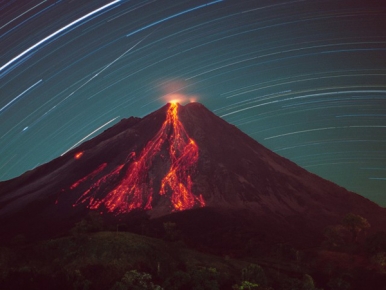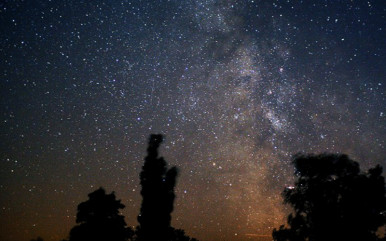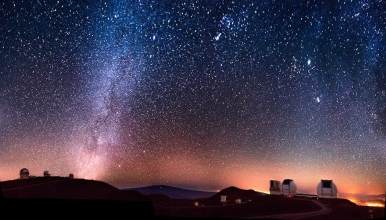Cosy up at some of the world’s best spots for stargazing
If you're a fan of astronomy and yearn to see the stars peppered across crystal clear skies, these places are your best bet:
La Fortuna, Costa Rica

Costa Rica has long been a go-to destination for astronomy buffs keen to experience clear skies and minimal light pollution. Go in the dry season, between December and April, when the stars are at their brightest and you will be rewarded with endless constellations in the Milky Way as well as the Magellanic Clouds, two clearly visible dwarf galaxies (look out for the bright-red Tarantula Nebula). The small town of La Fortuna, in the middle of northwestern Costa Rica’s rainforest and just a few kilometres from the active Arenal Volcano, is the perfect base for stargazers. Up the romance quota by staying at the Tabacón Grand Spa Thermal Resort at the base of the volcano, where you can experience natural hydrotherapy provided by hot springs and waterfalls.
tabacon.com
NamibRand Nature Reserve, Namibia

The vast NamibRand Nature Reserve in southern Namibia – home to such desert-adapted animals as the gemsbok, mountain zebra and bat-eared fox – has been awarded International Dark Sky Reserve status, making it one of the best places to stargaze. Stay at the luxury Sossusvlei Desert Lodge to enjoy hot-air ballooning, quad biking or 4×4 safaris during the day. When the sun goes down, snuggle up in bed beneath your own personal skylight or join the Lodge’s resident astronomer for after-dinner stargazing at the state-of-the-art observatory. Look out for the red supergiant star, Antares, which is 850 times the diameter of our sun.
namibrand.com
andbeyond.com/sossusvlei-desert-lodge
Big Island, Hawaii

One of the world’s most romantic destinations also happens to be a premier stargazing hotspot. Right in the middle of the Pacific Ocean, Hawaii has virtually zero light pollution, and the highest peaks on the Big Island also benefit from a tropical inversion cloud layer that ensures skies free of atmospheric pollutants. Lie on a palm-fringed beach with waves lapping at your toes and take in some of the Northern Hemisphere’s best-known constellations, including the Milky Way, the bands of Jupiter, and Orion. Or take a 4×4 up to the peak of Mauna Kea, a dormant volcano that is home to the world’s largest and most advanced astronomical observatory.
maunakea.com
If you don’t fancy braving the elements, head to a planetarium. New York City’s Hayden Planetarium, at the American Museum Of Natural History, is consistently rated as one of the world’s best with its interactive presentations and in-house astrophysicist.




